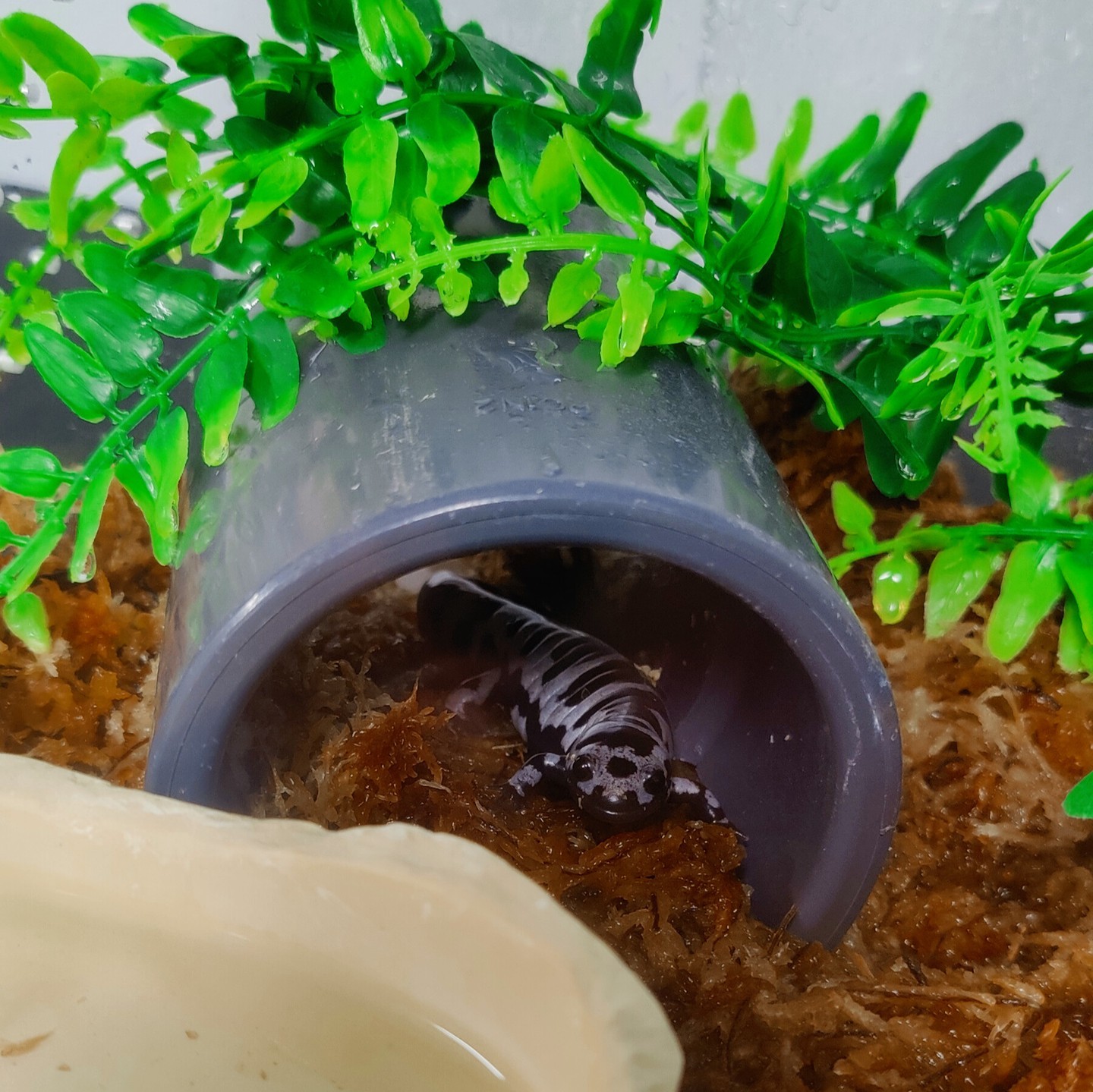Summary:
– The marbled salamander is a unique and fascinating species that gets its name from the white or silver bands on its black body.
– Female marbled salamanders have more silver bands than males, predominantly white bands.
– This species is known for its secretive nature and ability to thrive in various habitats.
The marbled salamander, like our Maple, gets its name from the white or silver bands covering adult salamanders’ black bodies. The bands on female marbled salamanders are more silver than males’ bands, which are generally white. This unique and fascinating species has captivated the interest of many wildlife enthusiasts and researchers, and there are several intriguing aspects to explore about the marbled salamander.
Firstly, let’s delve into the habitat and distribution of this exquisite creature. Native to the eastern United States, the marbled salamander can be found in various habitats, including woodlands, swamps, and even suburban areas. They have a particular affinity for moist environments and are often seen near vernal pools, small temporary bodies of water crucial for their breeding success. Despite being predominantly terrestrial, they are excellent climbers and can often be found hidden under logs, rocks, or leaf litter.
Now, let’s talk about the unique reproductive behavior of marbled salamanders. Unlike many other salamander species, they display a behavior called “courtship feeding.” During courtship, the male marbled salamander brings potential mates a small prey item, such as an insect or a worm, as an offering. This behavior helps establish a bond between the male and female and provides the female with extra nutrients, potentially increasing her reproductive success. It’s fascinating to see nature’s intricate strategies, even in seemingly small creatures like salamanders.
Moreover, the marbled salamander holds an interesting secret within its lifecycle. Marbled salamanders do not lay their eggs directly in water, unlike most other amphibians, including frogs and toads. Instead, the female deposits her eggs in leaf litter or other moist areas near the vernal pools or other bodies of water. This allows the eggs to develop and hatch into larvae, known as “salamanderlings,” before the pools fill up, providing a safer environment for the young salamanders. This unique adaptation showcases the remarkable resilience and adaptability of this species.
Another captivating feature of marbled salamanders is their ability to regenerate lost body parts. If they are unfortunate enough to lose a limb or tail due to predation or injury, they can regrow these body parts. This regenerative ability, known as autotomy, helps them escape predators and ensure survival in the wild. It serves as a reminder of the incredible biological diversity and adaptability found within the animal kingdom.
Furthermore, marbled salamanders are known for their intriguing coloration, serving as a camouflage mechanism and a means of communication. By blending with their surroundings through their black-and-white banded pattern, they can remain hidden from predators, relying on their cryptic appearance. Additionally, these distinct color patterns may play a role in visual communication among individuals of the same species, conveying information such as dominance or reproductive readiness.
In conclusion, the marbled salamander is a captivating creature with unique and fascinating characteristics. From its striking black-and-white banded coloration to its courtship-feeding behavior and ability to regenerate lost body parts, this species showcases the wonders of nature’s diversity and adaptability. Next time you find yourself in the woodlands or near vernal pools, watch for these elusive salamanders and be captivated by their charm and beauty. Remember, even the smallest creatures can hold the most extraordinary secrets.
*****
Source Description
The marbled salamander, like our Maple, gets its name from the white or silver bands covering adult salamanders’ black bodies. The bands on female marbled salamanders are more silver than males’ bands, which are generally white.


